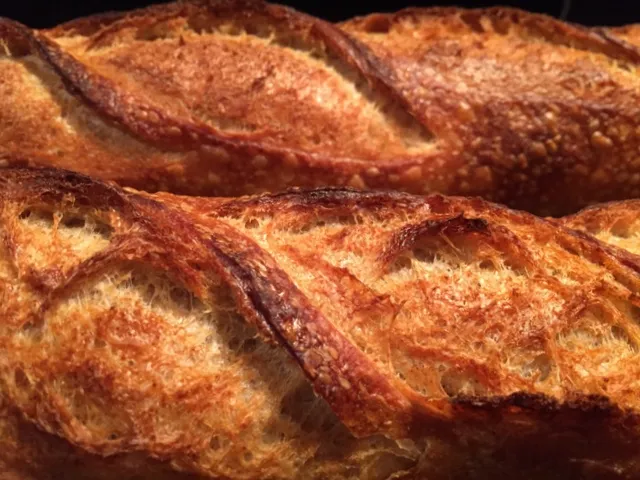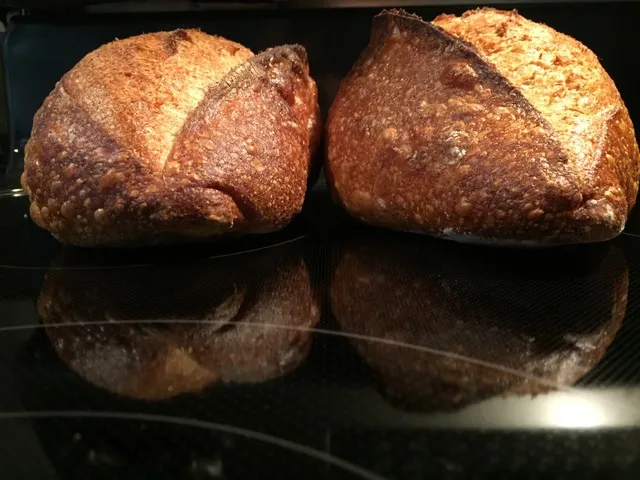Kens Artisan Bakery Country Brown

Next up was making baguettes based on Ken's Artisan Bakery's Country Brown batards and boules. The other day I did the same to his bakery's Country Blonde. Not much to add except that I'm in the midst of a tear for getting batard and boule formats squeezed into baguettes. Must be an affliction, Doc.








